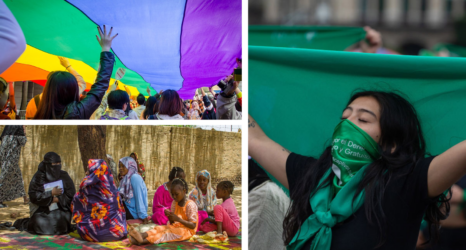Ishita Malaviya always dreamt of becoming a surfer, but didn’t think there were any waves in India, her home country.
But about eight years ago, she and her boyfriend, fellow surfer Tushar Pathiyan, stumbled upon an ashram in the small university town of Manipal that was packed full of surfers from California.
“We were super excited to find out that they were surfing just an hour away from where we lived and asked if they would be willing to teach us,” she explains. “They were stoked to see that Indian locals were keen on learning to surf, and it wasn’t long before we were catching our first waves.”
Now, she proudly holds the title of India’s first woman surfer.
“I would have never, in my wildest dreams, ever imagined that I would be the first female surfer in India,” Malaviya says in a video shared recently by Upworthy, which has been viewed more than 2 million times. “It’s a country of 1.2 billion people. I was like, ‘No, it can’t be possible!'”
Following their passion for surfing, Malaviya and her boyfriend sold almost all of their possessions in 2007 and bought their first board, which they shared.
“I still remember the feeling of riding my first wave,” she says. “I was smiling all the way to the shore and all the way back home from the beach! I knew I would be surfing for the rest of my life.”
The pair soon opened The Shaka Surf Club in Kodi Bengre, a fishing village on India’s west coast, and now run it full-time. They teach classes and water safety courses, connect the country’s community of about 100 dedicated surfers and recently started a surf camp. And Malaviya is working hard to get more women into the water.
“With surfing, you develop such a nice relationship with the ocean, and I think even the women here need to experience that,” she says. “Why not? It’s not just a place for men.”
Malaviya says that dirty beaches and a lack of waves keep many Indians—both women and men—out of the water, but women and girls face additional barriers.
There is a lot of social pressure on women to look and dress a certain way. Dark skin is not considered beautiful and so most women are afraid of getting tanned. From my experience surfing in the village I’ve noticed that most parents don’t allow their daughters to surf after they reach puberty because they are concerned about their attire in the water and want to limit their interaction with other boys in the community.
She does think the culture is changing, though, and sees families becoming more open-minded about allowing their daughters to surf. Plus, she says, “Tushar and I have taught many girls how to surf. Our regular crew includes three young surfer girls from the fishing village we surf in. … I have a lot of hope for the future of women’s surfing in India.”
To learn more about surfing in India, watch the video below.
Screenshot from A Rising Tide





